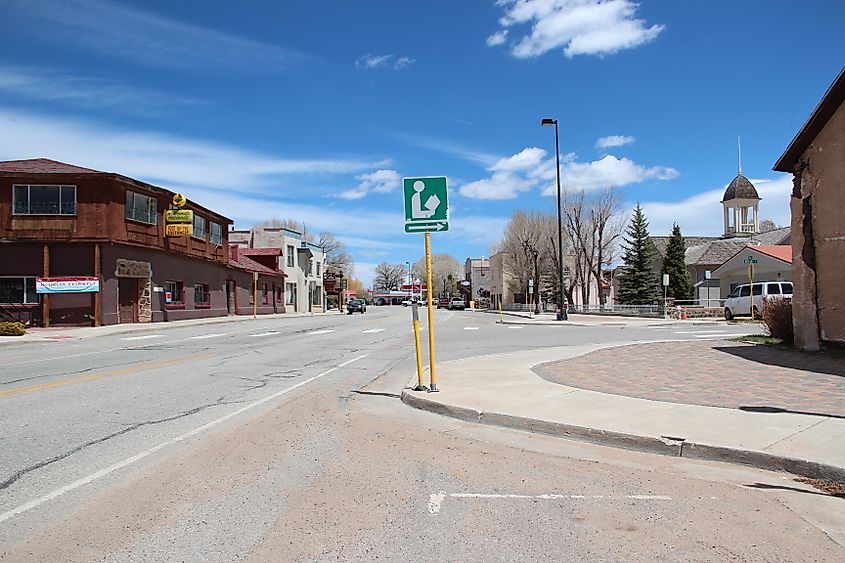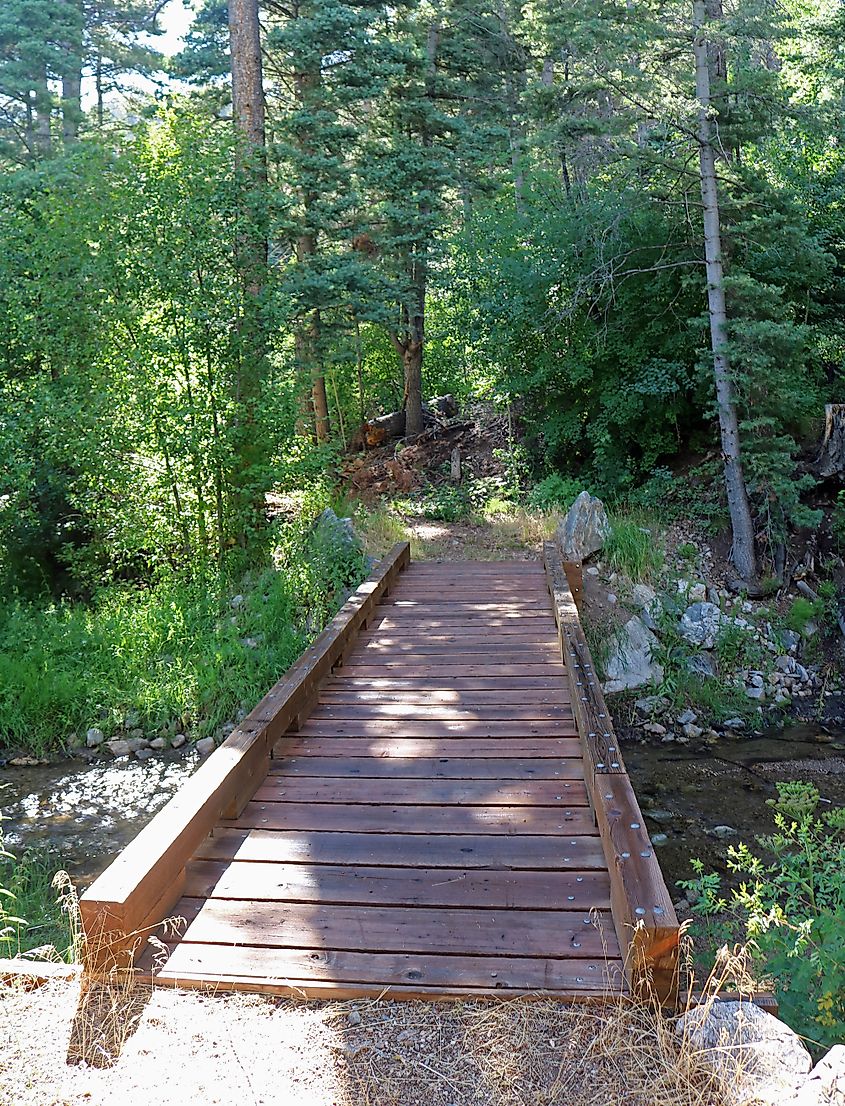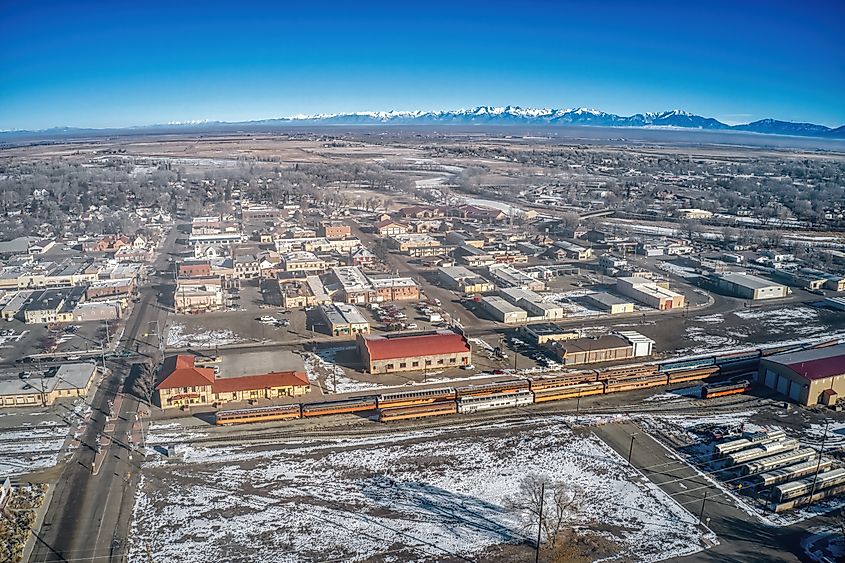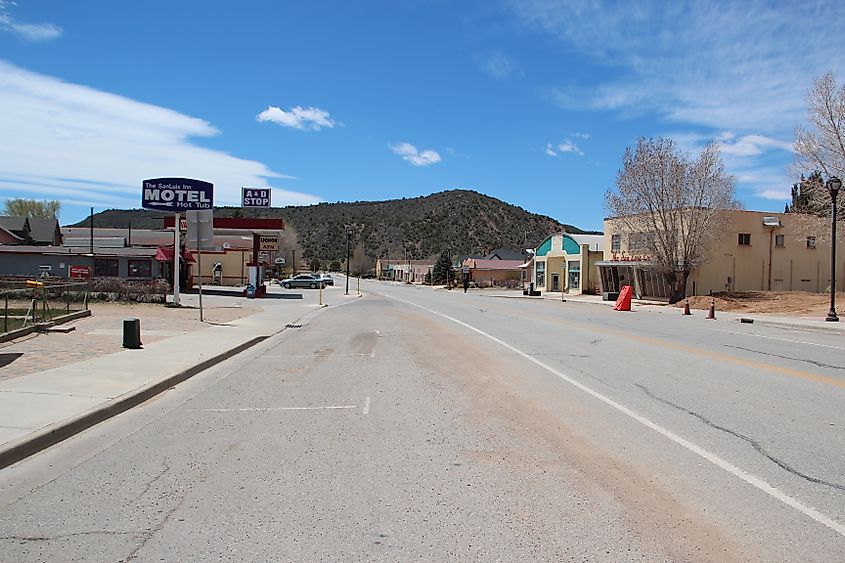
This Colorado Town Is Older Than the State Itself
Colorado has a dynamic and eventful history, from the early days of the frontier to the Gold Rush and a continuing legacy of prosperity. Although it's now smack dab in the center of the country, as opposed to the precipice of the west as it once was, the state's dramatic topography and abundance of untouched landscapes have allowed Colorado to still maintain an old-timey vibe in many places, including the first official town to call it home: San Luis.
This article takes a deeper look at this remote community of around 750 residents. Read on to find out more about its unique past and what other attractions you can find in the region.
A Living Relic From America's Spanish Colonial Past

San Luis, Colorado, holds the distinction of being the oldest continuously inhabited town in the state. It was officially established in 1851 by Hispanic settlers from New Mexico, nearly 25 years before Colorado gained statehood. For the most part, the area's early settlers were drawn to the fertile Culebra Creek Valley and the fact that land grants were being issued by the then-governing Mexican government under the 1843 Sangre de Cristo Land Grant.
Before 1848, the area was still part of the Mexican Territory, and the borderlands were frequently contested between the expanding United States and struggling Mexico, along with some conflicts with native inhabitants. The original settlement, called "El Valle de San Luis," was built around irrigation-based farming and a system of communal land use known as the “acequia.” With that, the town quickly became a cultural and economic hub for the communities of the San Luis Valley.
However, after the Treaty of Guadalupe Hidalgo in 1848, the region was ceded to the U.S., and San Luis eventually became part of the Colorado Territory in 1861 (which, before that, was part of the greater Kansas Territory). Despite these changes, San Luis held onto much of its cultural identity, but did not grow much bigger.
Today, its quaint historic district, adobe buildings, and famous landmarks, like the Stations of the Cross shrine, have made it a classic southwestern town. It proudly shows off its diversity rooted in Spanish, American, and Native influences.
The Shrine of the Stations of the Cross

The famed Shrine of the Stations of the Cross in San Luis stands atop a mesa overlooking the town and the surrounding San Luis Valley. Commissioned in the 1980s by local priest Fr. Patrick Valdez, the shrine was created as a place for reflection and pilgrimage, but it is simply a beautiful structure in a beautiful spot, too, even for non-believers.
The pathway leading to the shrine winds up a hill and is lined with native plants, desert-inspired stonework, and interpretive signage. At the summit sits the Chapel of All Saints, a small adobe-style structure that echoes traditional southwestern design. It most notably boasts a series of bronze sculptures depicting the 15 Stations of the Cross, each crafted by artist Huberto Maestas, a San Luis native. Looking outwards, it's an excellent place to scope the area and catch a sunset or sunrise if you're there at the right time.
Other Attractions Around San Luis
It should come as no surprise that in and around this small Colorado town, outdoor activities are abundant. With the wonderful scenery of the Rocky Mountains at hand, among other idyllic natural features, here are some of the best spots near San Luis that will help you get the adventure started.
La Otra Banda Ranch
La Otra Banda Ranch is a family-owned, 107-acre preserve located just outside of town. The property has been passed down through generations of the Atencio family and reflects a longstanding tradition of Hispanic-American landownership in the San Luis Valley.
The ranch features scenic meadows, cottonwood groves, and a private, meandering stretch of trout-rich water, making it a lauded destination for fly-fishing trips. Anglers can expect to catch rainbow and brown trout along a peaceful stream that winds through the area's pristine high-desert landscape. Besides fishing, the ranch provides a quiet setting for simple wildlife viewing and seasonal recreation, such as hiking.
Rito Seco Park

Rito Seco Park, situated just east of San Luis, began in the 1970s as a small, shaded campground nestled in a ponderosa pine and aspen-laden canyon. For decades, it offered little more than picnic spots and solitude in the great outdoors for locals in the know.
In more recent times, after a dozen years of planning and financial support, Costilla County and San Luis Valley Great Outdoors added a new network of hiking trails and a single-track mountain-bike route, complete with wooden bridges and creek crossings. The park now weaves through steep hillsides and along Rito Seco Creek, which also provides habitat for beaver ponds and other native flora and fauna.
Great Sand Dunes National Park and Preserve

Great Sand Dunes National Park and Preserve is about 45 minutes northeast of town and protects the tallest sand dunes in North America. This truly out-of-place landscape needs to be seen and believed.
Formed by a unique convergence of wind patterns, water runoff, and surrounding mountain ranges, the dunes rise up to 750 feet at the base of the Sangre de Cristo Mountains. The park covers a range of environments beyond sand, including alpine lakes, wetlands, grasslands, and forests. Here, you are open to check out Medano Creek, a seasonal stream that flows at the base of the dunes, a popular place for wading and sandcastle building, or venture around any of the dunes at will.
Furthermore, backcountry hiking, sandboarding, and stargazing (as the area is also a certified International Dark Sky Park) are also common activities here.
Alamosa

Also, a 45-minute drive away, the city of Alamosa is the liveliest community in the valley, featuring a population of nearly 10,000 and tons of modern amenities.
For many, Alamosa is a launch point for adventures, ranging from hiking Blanca Peak to sightseeing at Great Sand Dunes National Park, but its downtown district has much more in store. With a visitor center in an old rail depot, an assortment of breweries and restaurants, and various accommodations, ranging from hotels to simple roadside motels, it can certainly offer you some respite from the wilds of Colorado for a little bit. If you're hungry, a local favorite is The Rubi Slipper LLC, which serves up classic American and Mexican fare. If you need a cold drink after a long day out, both San Luis Valley Brewing Company and Spare Keg Brewery are down the street.
Another worthwhile attraction here, especially if you are interested in the history of the region, is the San Luis Valley Museum, located on the east side of dowtown near the Rio Grande.
Explore Colorado's History in This Welcoming Community

From historic churches to high-desert parks and crystal clear streams flowing through grassy meadows, this part of southern Colorado is also exemplified by welcoming communities like San Luis, ones that have endured the centuries and are full of character because of it. The next time you are roadtripping around the Centennial State, be sure to pay a visit to this historic spot for a day or two of learning and scenic adventure.











